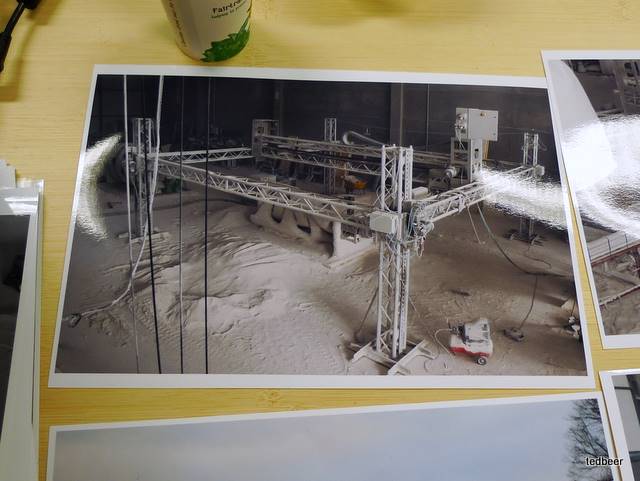3D Printing Event (End)
3d printing event

Outside the article about the first 3D printing event in the Netherlands, there were a few unlit moments and photographs. And the hawkers showed considerable interest in the topic, so I can not help but share the rest of the information. It will be about 3D printing of jewelry, food and sculptures.
Software is not the last thing.
At KDPV, the result of the selective laser sintering ( SLS ) machine is higher. Netfabb demonstrated the capabilities of its software with these air structures . By the way, they have a free version of netfubb Studio Basicwhich is popular among lovers. The program allows you to view stl files for printing, operate in parts, cut into layers. On their website you will immediately see a tree in the background. Here is a huge tree 2.4 meters high and with a crown diameter of 3.4 m, calculated on their software. Data in .stl format weighs 1Tb. 10 computers working in parallel for 6 hours sliced the model into layers. And then the print tree was divided into 7 parts, which eventually printed 340 (!) Hours. For a modest amount of 70k € it can be purchased for your winter garden :)
Jewelry

The Aures printer of the German company envisiontec GmbH prints with jewelry precision. Resolution along the XY axis is 0.043mm, and along the Z axis it is 0.025-0.035mm depending on the material. But slow-n-n-n-n-n-n-but: 3-7mm per hour. The principle of work here is a little different. Prints from materials based on resin, which cures under ultraviolet light. That is why you have to cover the print area with such a wonderful cap - so that parasitic illumination does not occur. Products turn out to be excellent - worked out details, a smooth surface:


Then the model is used to make a mold for casting:

Since the process is slow and the area allows, several copies are made at once.
After casting, it remains only to polish, insert the stones (or not to insert) and you're done!

The elaboration of details is simply incredible:

And you will not believe it, but there is a fan who independently made a similar machine with comparable characteristics. At first I even thought that it was his machine at the exhibition, but apparently he just saw professional designs and repeated it. True, until he is eager to share the details of the design. Although what are the details? The same 3 dimensions, we slowly drive the UV flashlight, shine in the bath with the resin and as it hardens, we immerse the model or not just immerse it, we wet the surface and then raise it to light up. Well, the optics still need to be counted / adjusted.
Architecture
If you work a little on enlarging the machine, you can grow up to print small architectural forms. Although "small" it can only be called Zurab Tseriteli.
After a short introductory speech by a representative of Rhinocentre, an unprepossessing peasant entered the scene. Such a hard worker with rude hands. In Russia, he would most likely be the owner of an old well-deserved penny, or at least six, would thump in the evenings in the garage with friends. He turned out to be a sculptor :) Demonstrated how he easily and naturally makes sculptures on a computer using Rhino software, said that they print a small model on the spot, and then send a task to Italy to print a full-size sculpture there. Then it is delivered back to the workshop, brought to mind and installed to the customer.
Models and sculpture:

Printer:

One of the sculptures in place:

Food stamp
There is such a topic. I can’t tell in detail about the printing of food, because it was physically impossible to attend all the reports - they went in parallel in two rooms, and I skipped the food dedicated :) But I got acquainted with TNO materials. In fact, they do not have any killer product. They learned how to make microfibers, microspheres and microcapsules from edible. The size of these structures is in the submillimeter range.
They call their print head their development - a head with 500 nozzles, which allows the processing of liquids and other materials with high speed. Accordingly, you can then print the final product by combining the necessary protein-fat-carbohydrate proteins in the right beneficial proportions. In fact, food can have fat / nutritional characteristics on an individual basis. They are also played with laser sintering of sugar, printing chocolate chains, etc.
Printing chocolate on amateur looms.
But the people do not want to wait. And many are already trying to print with chocolate by constructing a special feed or using different workarounds.
The main difficulties are careful temperature control, the flow of chocolate and its curing too slow. The machines are sharpened to feed plastic in the form of a thin rod with a diameter of 3mm or 1.75mm. I met an original solution - instead of an extruder, a syringe is attached, and a plastic bar presses on the piston and squeezes chocolate paste or silicone, for example, which can also be filled into the syringe.
In general, there are still a bunch of areas where 3D printers can open up a new niche.
